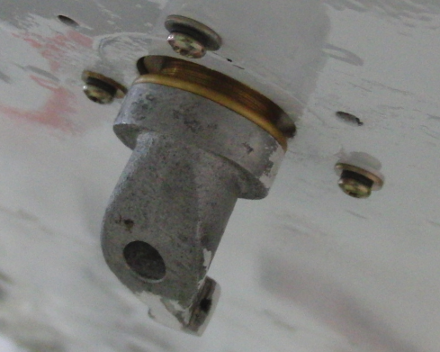Thermo-electronic Dew Point Sensor
A mirror attached to a thermoelectric cooler (or heater) is mounted inside a small chamber that is exposed to the airstream. If the mirror temperature is colder than the dewpoint inside that chamber, dew or frost accumulates on the mirror surface. A small light source illuminates the mirror, and a sensor detects the amount of light reflected from the mirror. A feedback control circuit maintains the temperature of the mirror just at the threshold for condensate, and a temperature sensor measures the temperature of the mirror, which should then correspond to the dewpoint in the chamber. Because airflow effects can change the pressure (and hence the dewpoint) in the chamber from that present outside the aircraft, the pressure in the chamber is also measured and used, with measurement of the ambient pressure, to correct the measured dewpoint to the ambient value. Other measurements of humidity including mixing ratio and specific humidity are then calculated from the measured dewpoint. For details, see the discussion of processing algorithms and the tutorial on state parameters under "Documentation" at the end of this section.
The following is a photograph of the exposed housing used for these sensors:
Measurement Characteristics:
- Range:-60 to 50C
- Overall estimate of uncertainty: 0.5C > 0.0 or 1.0C < 0.0
- Response time: 0.2 to 10s dependent on humidity (faster at higher dewpoints)
History of Significant Changes: Measurement of internal pressure in the sensing heads was added to the GV instruments in 2011 and to the C-130 instruments in 2012. Prior to that, significant errors could exist because of differences in pressure between the sensor housing and the ambient air.
